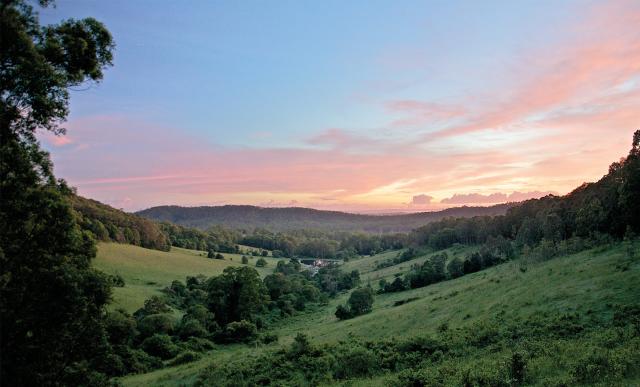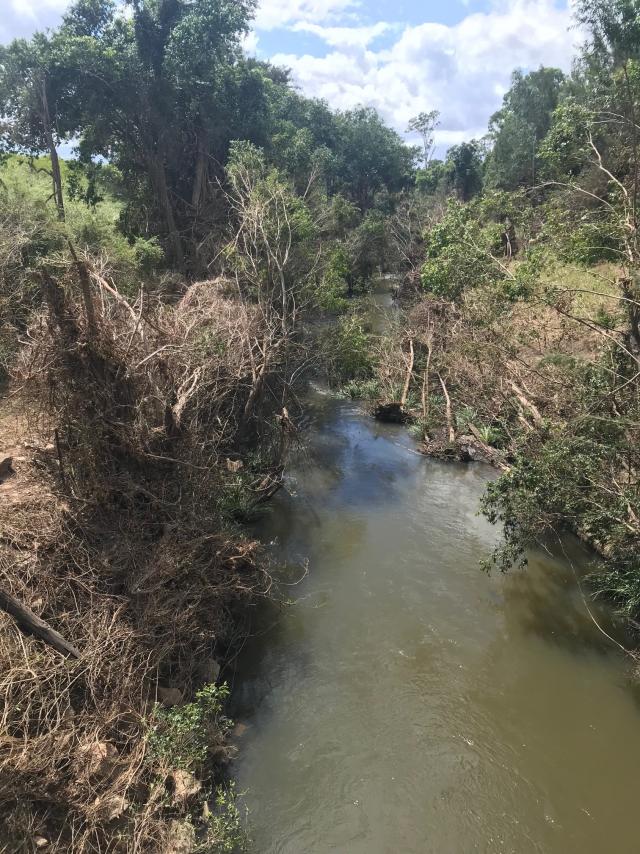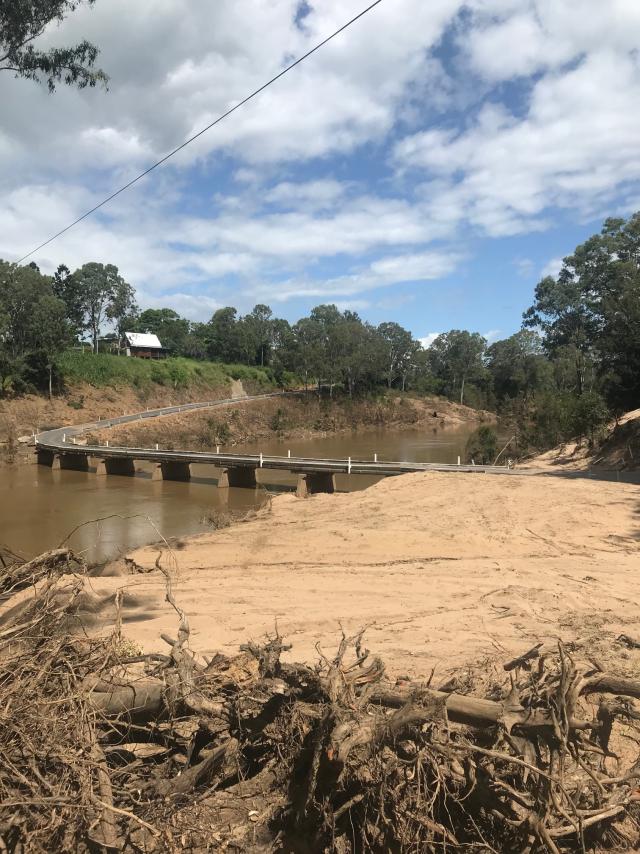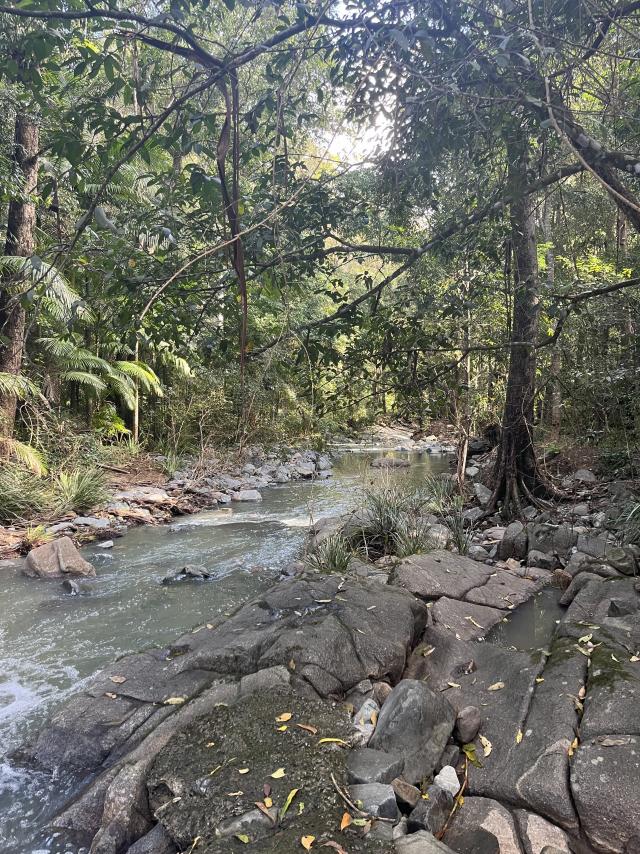Towards the One Mile, which is low lying ground, the scene is indescribable, and on every hand are to be seen houses of all sorts and sizes, household furniture, and debris of every description. The back yards and verandas of most of the higher buildings present a curious appearance with all sorts of articles hung out to dry, and resemble nothing so much as second hand clothes shops. Mrs. Tozer’s paddock is like a small settlement, and off the lower portion of the ground two houses have been deposited … The greatest amount of concentrated damage, however, appears to, have been suffered on the Great Eastern Road, where a complete settlement has been entirely swept away.
Gympie Times, 11 February 1893
On 1 February 1893 a cyclone crossed the Queensland coast near Rockhampton signalling the beginning of the worst protracted flooding in Queensland and Wide Bay history.
Although Noosa and the Sunshine Coast were still sparsely populated, the cyclones and floods of the first half of February 1893 devastated the main towns of Maryborough and Gympie, with loss of life and hundreds left homeless. The Mary River peaked at Gympie at a reported 25.45 metres, which remains its record height.
One hundred and twenty nine years later the Mary River peaked at 22.8 metres on Sunday morning 27 February 2022, the highest level since 1893. Some would argue that measuring procedures in the 19th century were nowhere near as accurate as they are today and that a new historical level was established this year, but this is mere semantics for the farmers, timbergetters and tree-changers of the Mary Valley. What was notable to them was that, just like 1893, the floods of 2022 went on and on and on.
Near Kenilworth, the 15 residents of Walker Road, including egg farmer Gordon McWilliam, whom you’ve met previously in this series, were isolated by raging flood waters from 25 February to 8 March, requiring two helicopter food drops. Their story was just one of many throughout the valley, as an autumn of misery and mould continued through to June.
Although this series has focused on the upper river above Gympie, it is worthy of note that the Mary is a relatively long and complex system of considerable ecological and economic importance. From source to mouth, it is joined by 19 tributaries, including Tinana Creek, Munna Creek, Obi Obi Creek, Yabba Creek, Wide Bay Creek, Six Mile Creek, Deep Creek and the Susan River. The river descends 209 metres over its 291-kilometre course and its catchment area is 9,595 square kilometres, bounded by the Conondale, Jimna and Burnett Ranges.
As Professor Tim Flannery commented in 2012: “It’s not the biggest, it’s not the longest, but I reckon it’s one of the most important rivers in Australia.”
But it is also a misunderstood river, as Ian Mackay, chair of the Mary River Catchment Co-ordinating Committee explained recently: “Some refer to our river as ‘the mighty Mary’, and this leads many a visitor to be disappointed with what is, for most of the year, a modest river by anyone’s assessment. Its might is something to behold when it floods though, and although the 1893 levels have never been surpassed, flooding is a rather regular phenomenon not only for Gympie and Maryborough but also for Kenilworth which has seen many bridges washed away in the last few decades.”
Mackay, a jovial yet wise retired schoolteacher who has lived in the valley with his family for more than 40 years, is truly the renaissance man of the river. In addition to his work with the MRCCC, he is a bush poet, writer, historian, conservationist and amateur beekeeper – I have a delicious jar of honey as evidence. He and wife Sally bought 20 acres in 1980, dismantled their cottage at Emu Park near Yeppoon, put it on the train south and rebuilt it above the river, where Ian has been adding on mud brick sections ever since.
Although he was teaching full time in Gympie, Ian soon became embroiled in the environmental politics of the valley, joining the Conondale Range Committee, little realising that he would be its president for the next 35 years. The issue of the day was to establish a Conondale National Park, which was achieved during the Goss government of the early 1990s. But in 1987, when Fred Murray, then mayor of Maroochy Shire, declared that unless another dam was built as soon as Barroon Pocket was finished, the Sunshine Coast would run out of water by the year 2000, another campaign began.
A list of 19 sites was proposed and Conondale was on it, prompting a new fight against the governments of the day, which the committee won. Interestingly, another site proposed was Traveston, which was dismissed out of hand as totally unsuitable, but that one would come back to bite the residents of the valley.
Despite Traveston being rejected as a dam site by the Goss Labor government, in light of the region’s longest drought in 100 years, the Queensland Labor government of Peter Beattie announced in April 2006 its intention to dam part of the Mary River at Traveston Crossing, south of Gympie.
Says Ian Mackay: “After the first dam plans were defeated in the early ‘90s, we decided to look at other means of handling the water issue. The government introduced WaterWise, water meters came in and consumption went down. The figure at the time was 530 litres per person per day. By the time Traveston came back on it was down to about 350. So here we are in 2022 and we still haven’t run out of water! Consumption is down to around 200, except Noosa, which is way above average. So things were moving in the right direction, but the Beattie government was hell bent on building a huge dam.
“The thing is that it doesn’t matter how big a dam you build, the river goes dry for months most years and the dam will be near empty. That was basically the problem with Traveston.
Then this thing called a strategic reserve of 150,000 megalitres was announced, no one knew from where, and within a few weeks the Beattie government announced Traveston Dam, which would have pretty much the same volume. Everything about the site was wrong. It had threatened species and the greatest community impact on freehold land, but the government seemed determined and the only thing that could stop it was Federal intervention.”
After 20,000 people petitioned the State government and all local councils voted against it, the dam that would be “almost as big as Wivenhoe”, was cancelled in November 2009 after being refused approval by Federal Environment Minister Peter Garrett.
Ian Mackay had worked strenuously throughout the campaign, sending out press releases to keep the matter in front of the media, with considerable support from the Gympie Times. But he says: “The wedge it drove into the community was quite horrible, and it still flares up from time to time, because you have people who sold, people who stayed true to their principles and didn’t, and people who sold but leased back at a peppercorn rent and then bought back when the dam didn’t go ahead. Since then there have been other battles, most recently the Borumba hydro proposal which initially seemed like another Traveston. It isn’t, but the danger that a mega-dam proposal could come back is quite real.”
Meanwhile, the Mary rolls on, over its banks some years, dry for long stretches in others. But according to Ian Mackay, appreciation of the river’s unique conservation values has grown since the first Mary River Congress 30 years ago. He says: “Attention has shifted away from the flood-ravaged banks and has begun to focus on what lives in the Mary. The Queensland lungfish was quite well-known but few appreciate the scientific excitement its discovery in 1870 generated. Prior to that it had only been known to science through the fossil record; finding living lungfish was akin to finding living dinosaurs. And the Mary River Cod finally has been recognised as a species in its own right rather than just a sub-species of the Murray Cod. And of course, the Mary River Turtle, which managed to elude scientific attention for years before being described in 1994, is now recognised as a rare species.”
Riding my e-bike back to the coast, through the rolling hills of Bollier and Ridgewood and through Cooroy, I reflected on what a fascinating river the Mary is, and how proud and protective of it so many residents are. As I reached the escarpment at Tinbeerwah and took the old road down the hill to home, big rain drops started falling for the first time in a week.
My first thought: I hope my new friends in the Mary don’t cop another round.











